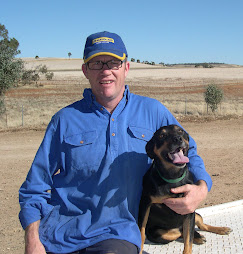Daterra with all their Accreditations
The farm is setup with the following land uses;
• Coffee - 2640 Ha.
• Corridors of Native Vegetation linking blocks of legal reservation - 400 Ha.
• Legal Reservation as part of the 20% required by law – 1826 Ha.
• Permanent Vegetation along creeks and rivers – 626 Ha.
• Native vegetation being regenerated – 1113 Ha.
• Administration & Buildings etc. – 36 Ha.
• Total – 6646 Ha
Daterra produce 100 million tonnes of coffee beans each year. The company employs 220 full time and 150 part timers. These are involved mainly in the field and in the factory. They used to employ 1200 hand pickers but they have been directly swapped over for 15 tractor drivers. Now 85% of the harvest is picked by machine.
Coffee comes from a tree which is pruned to make new growth. The plants come into production 2 ½ years after planting. They have their beans on second year wood and they tend to be biennial with a 70:30 split. The critical time is just before flowering when there must be sufficient moisture available to allow full flowering and this sets next years seed set.
The beans are picked when the “cupper” says it is ready. The cupper is a key person in the coffee business. It is their job to collect beans from the trees to taste them. He has to firstly dry them and then roast to get them ready for the tasting process. It is similar to wine tasting.
The Cupper Doing his Tasting
He has a number of criteria to assess the beans, firstly he puts the ground beans in the cup and smell them and then tastes them by slurping to draw air and coffee across your palate. He judges such as aroma, acidity, depth of character & finish. After tasting he decides which plots are ready for harvest. He continues the cupping during harvest and the drying process.
The ripe beans are firstly picked by a harvester similar to grape machines, with rotating beaters which remove about 75 – 85% of the crop. Then a circular rotating brush is which remove most of the remaining beans. These are then swept up with a vacuum harvester.
Coffee Harvester
The beans are taken to the factory and clean & washed to remove the outer shell / covering. The beans need drying down from 65% to 11% moisture. This must done slowly to retain the oil and flavour. This drying process is the bottle neck for the farm as they only have 6 dryers which take 2 days to dry a load. Once they have come down to 11% they are put into large wooden vats which hold 50000 tonne. The coffee beans are stored for about 40 days and then cupped again after which the cupper assign them a quality. Reserve is their premium label. At present they sell their beans to a roaster, who then sells them to the public. Daterra is looking to value add it bean sale with roasting and selling to the public but later on have their set on some coffee shops. They already supply, Queen Elizabeth’s coffee roaster.
The Queen's Coffee Vault
Daterra have a good social conscience as they are involved with a lot for their labour force and communities.They currently;
• Supply breakfast each day for staff.
• Give family loans from the company.
• Bring schools on for tour but not only factory and plantation. They have camps to investigate the habitat and environment of native vegetation areas for plants and animals.
• Scholarships for staff to educate and better themselves.
• Support childcare facilities in area.
• Have family festival at the plantation
As I don’t drink coffee I haven’t added it until now, but the cupper put us through a testing of the coffee. Rob and Rowan picked the three grades in the right order.
The current issue of the drying process is going to be addressed in the near future, with some more drying kilns and the labour with some union issues. Supply of high end coffee has increased dramatically. For the coffee aficionados we saw a pack of Weasel Coffee or Kopi Luwak. It has been picked by the Civet Cat and has passed through the intestines of the Palm Civet.
Internet Note; Planters soon discovered that the coffee bean itself was not digested by the palm civet and so clusters of beans appeared in their droppings. Some enterprising person tried washing and brewing the beans rather than waste them – and Kopi Luwak or Weasel Coffee was born. When news spread to the West, the unique rich flavour of this brew plus the sheer gross novelty of drinking coffee that had passed through an animal’s intestines created unprecedented demand. It is now such a hot gourmet coffee that it sells for $1000 per kilo. It is not your average barista coffee! There are reports of gourmet coffee houses selling it for $50 per cup. Reports from coffee –lovers who have tried it are generally favourable to rave reviews. The enzymes in the civet’s stomach apparently take away some of the coffee’s bitterness yet enhances the flavour and aroma, producing a unique cup.
This was a very good visit.










No comments:
Post a Comment